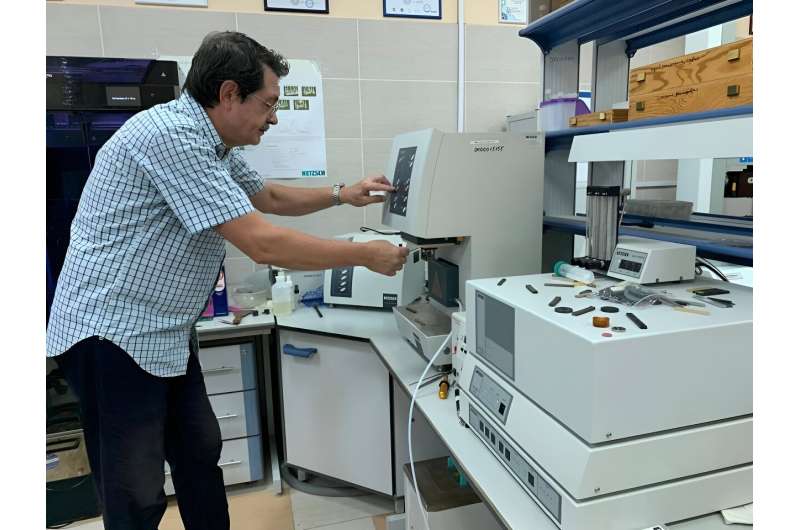This article has been reviewed according to Science X's editorial process and policies. Editors have highlighted the following attributes while ensuring the content's credibility:
fact-checked
trusted source
proofread
Scientists offer strong carbon plastics for aviation

Employees of the Institute of Chemistry of Kazan Federal University and the Kazan National Research Technical University have produced especially strong carbon plastics based on phosphate binders that can withstand temperatures of more than 500 degrees Celsius. The findings are published in the journal Composites Part A: Applied Science and Manufacturing.
"Composite materials are used very widely today: almost everything is made of them, starting from hockey sticks and ending with airplanes. The vast majority of composites are created using organic polymer binders, which have many positive features, but have two significant drawbacks: they are flammable and work up to temperatures of 300–450 degrees Celsius maximum.
"At the same time, the use of composites, for example, in aviation or astronautics, and in many 'earthly' areas, requires non-combustible materials capable of withstanding high (over 500 degrees Celsius) temperatures. We have solved this difficult problem by using inorganic binders," says Rustem Amirov, Chair of the Department of Inorganic Chemistry, Lead Research Associate of the Laboratory of Polymer Smart Materials and Nanocomposites of the Institute of Chemistry.
The scientists created a technology for obtaining carbon plastics based on aluminophosphate, aluminoborphosphate and aluminochrome phosphate binders reinforced with carbon fabric.
"We studied the rheological properties, density, surface tension and wetting ability of inorganic binders, and with this in mind we developed optimal impregnation regimes for carbon fabric. Drying and vacuum molding modes of carbon fiber-reinforced plastics were also developed," the scientist reported.
"The physical and mechanical tests showed that the carbon fiber-reinforced plastics obtained by us have high values of strength and elastic moduli in tension and bending. The method of dynamic mechanical analysis demonstrated high heat resistance of the obtained materials. The resistance of carbon fiber-reinforced plastics to thermal shock was evaluated by the change in the residual strength of carbon fiber-reinforced plastics in bending."
According to the chemist, the tests showed that carbon fiber-reinforced plastic based on aluminochrome phosphate has the highest strength and stiffness. Products made of it can be operated in high-temperature conditions, including short-term exposure to open flames.
"Plastic on the basis of organic binders pollutes the environment at its utilization," Amirov emphasizes. "Our composite materials are eco-friendly, and with decomposition they turn into components of clay and phosphate fertilizers."
The carbon plastics are not moisture-resistant enough yet, and therefore the next stage of the project will be to give them hydrophobic properties.
More information: A.M. Gaifutdinov et al, Optimizing the manufacturing technology of high-strength fiber reinforced composites based on aluminophosphates, Composites Part A: Applied Science and Manufacturing (2024). DOI: 10.1016/j.compositesa.2024.108310
Provided by Kazan Federal University




















